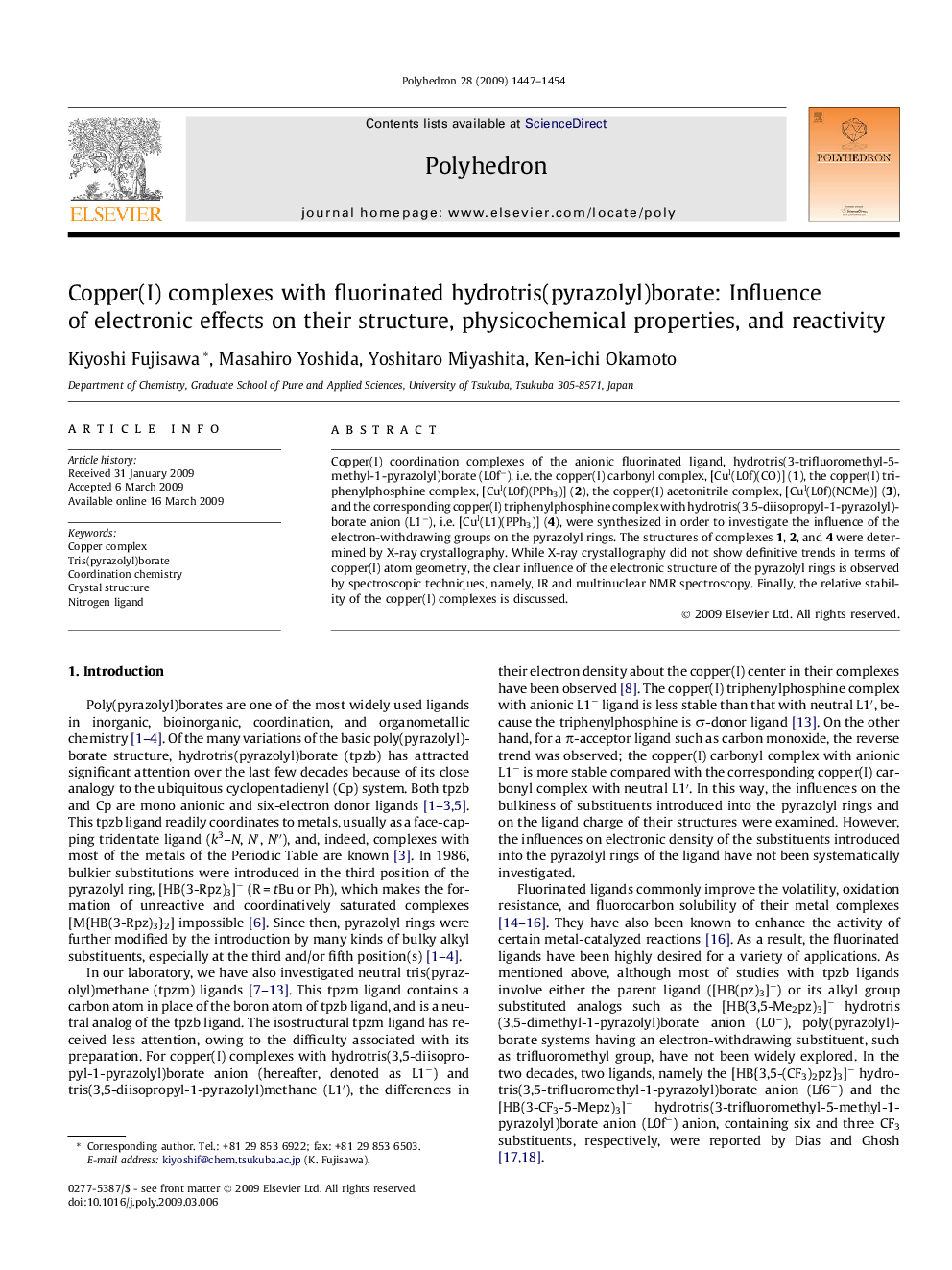| Article ID | Journal | Published Year | Pages | File Type |
|---|---|---|---|---|
| 1340139 | Polyhedron | 2009 | 8 Pages |
Copper(I) coordination complexes of the anionic fluorinated ligand, hydrotris(3-trifluoromethyl-5-methyl-1-pyrazolyl)borate (L0f−), i.e. the copper(I) carbonyl complex, [CuI(L0f)(CO)] (1), the copper(I) triphenylphosphine complex, [CuI(L0f)(PPh3)] (2), the copper(I) acetonitrile complex, [CuI(L0f)(NCMe)] (3), and the corresponding copper(I) triphenylphosphine complex with hydrotris(3,5-diisopropyl-1-pyrazolyl)-borate anion (L1−), i.e. [CuI(L1)(PPh3)] (4), were synthesized in order to investigate the influence of the electron-withdrawing groups on the pyrazolyl rings. The structures of complexes 1, 2, and 4 were determined by X-ray crystallography. While X-ray crystallography did not show definitive trends in terms of copper(I) atom geometry, the clear influence of the electronic structure of the pyrazolyl rings is observed by spectroscopic techniques, namely, IR and multinuclear NMR spectroscopy. Finally, the relative stability of the copper(I) complexes is discussed.
Graphical abstractCopper(I) coordination complexes of the anionic fluorinated ligand, hydrotris(3-trifluoromethyl-5-methyl-1-pyrazolyl)borate were synthesized and structurally characterized. While X-ray crystallography did not show definitive trends in terms of copper(I) atom geometry, the clear influence of the electronic structure of the pyrazolyl rings is observed by spectroscopic techniques, namely, IR and multinuclear NMR spectroscopy. Finally, the relative stability of the copper(I) complexes is discussed.Figure optionsDownload full-size imageDownload as PowerPoint slide
